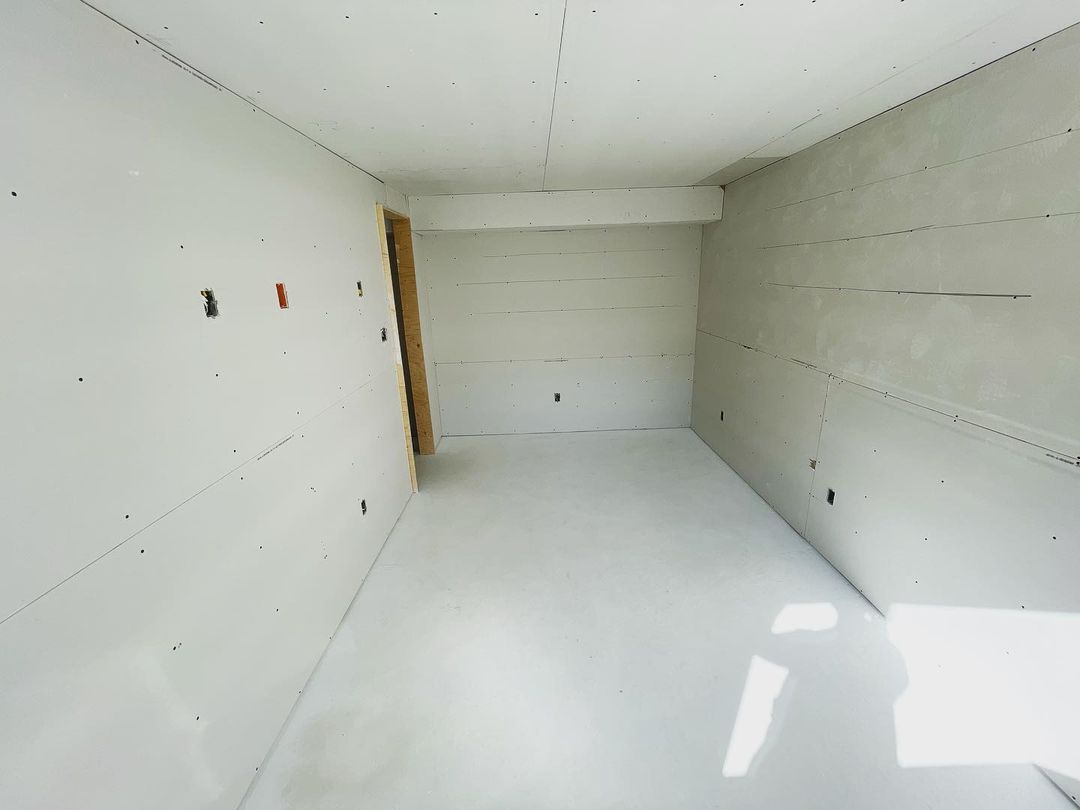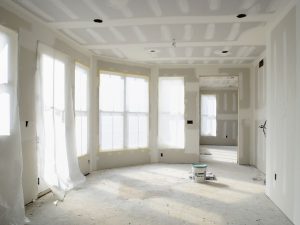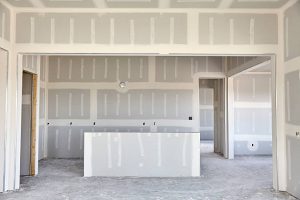Drywall, also known as gypsum board or plasterboard, is a fundamental building material used in the construction and renovation of homes, offices, and various commercial spaces. It forms the basis of interior walls and ceilings, offering a surface for paint, texture, or wallpaper. The quality of drywall installation is paramount, as it impacts not only the aesthetics but also the structural integrity, functionality, and safety of a building. In this essay, we will thoroughly examine the importance of high-quality drywall installation and the severe consequences of poor-quality installation.
I. Importance of High-Quality Drywall Installation
Structural Integrity
The first and foremost importance of high-quality drywall installation lies in its contribution to the structural integrity of a building. Drywall serves as a sheathing material, covering the structural framework of a building, and plays a crucial role in maintaining the structural stability. When installed correctly, it ensures that walls and ceilings can withstand the various stresses and loads that act upon them. Proper installation guarantees that the drywall is securely fastened to the framing, reducing the risk of sagging, shifting, or cracking.
Smooth and Aesthetic Finish
One of the most visible aspects of quality drywall installation is the smooth and even surface it creates. High-quality drywall installation results in walls and ceilings that are free from imperfections, such as dents, bulges, or visible seams. This smooth finish not only enhances the overall aesthetic appeal of the space but also simplifies subsequent finishing work, such as painting or applying decorative wall treatments.
Acoustic comfort is a significant consideration in both residential and commercial spaces. Proper drywall installation can significantly contribute to soundproofing, reducing the transmission of sound between rooms and floors. Well-installed drywall can minimize noise disturbances, creating a quieter and more comfortable living or working environment. This is especially important in multi-unit residential buildings, offices, and spaces where privacy and tranquility are valued.
Insulation
In many building designs, drywall serves as the base layer for insulation materials, which are essential for regulating temperature and improving energy efficiency. High-quality installation ensures that insulation materials fit snugly behind the drywall, reducing the transfer of heat and cold. This leads to better temperature control within the building, resulting in energy cost savings and increased comfort for occupants.
Fire Resistance
Fire safety is of paramount importance in building design and construction. Correctly installed drywall, when combined with fire-resistant materials or coatings, can enhance a building’s fire resistance. In the event of a fire, this additional fire protection can buy valuable time for occupants to evacuate safely and minimize property damage. High-quality drywall installation is an integral part of achieving fire-rated assemblies that meet strict safety standards.
Moisture Resistance
Certain areas of a building, such as bathrooms and kitchens, are prone to high humidity and moisture levels. High-quality drywall installation, coupled with proper sealing techniques, can help prevent moisture infiltration. This reduces the risk of mold growth and water damage, thereby promoting a healthier indoor environment and extending the life of the structure.
Durability
The durability of drywall is closely linked to the quality of its installation. A well-installed drywall system is more resistant to damage and wear over time. It is less likely to develop cracks, dents, or other forms of damage that may necessitate costly repairs or replacements. This longevity translates to lower maintenance costs and less disruption to occupants.
II. Consequences of Poor-Quality Drywall Installation
Aesthetic Issues
A poor-quality drywall installation can lead to a range of aesthetic issues that are not only unattractive but also time-consuming and costly to rectify. These issues may include visible seams, bulges, depressions, and a generally uneven surface. Such imperfections can make it challenging to achieve a smooth and visually pleasing finish when painting or applying wall treatments.
Structural Weakness
Improper drywall installation can compromise the structural integrity of a building. Gaps, loose screws, or inadequate fastening to the framing can lead to sagging walls or ceilings. Over time, this structural weakness can worsen, resulting in cracks in the drywall, damage to the finish, and even safety hazards if not addressed.
Sound Issues
Inadequate sealing or improper joint finishing in the drywall can allow sound to pass through easily. This is especially problematic in spaces where privacy and noise control are essential, such as residential bedrooms, offices, or healthcare facilities. Unwanted noise can be a significant source of discomfort and stress for occupants.
Energy Inefficiency
Gaps, cracks, or poor sealing in the drywall can create pathways for air leakage. This compromises the building’s energy efficiency by allowing conditioned air to escape and outdoor air to infiltrate. As a result, heating and cooling systems must work harder to maintain the desired indoor temperature, leading to increased energy consumption and higher utility bills.
Fire Hazards
Perhaps one of the most severe consequences of poor-quality drywall installation is its impact on fire safety. Subpar installation can compromise the ability of drywall to act as a fire barrier. Inadequate fire resistance puts occupants at risk in the event of a fire, as it can allow flames and smoke to spread more rapidly. This endangers lives and can result in more extensive property damage.
Poor-quality drywall installation may not provide the moisture resistance required in areas with high humidity, such as bathrooms, kitchens, or basements. Inadequate sealing or gaps in the drywall can allow moisture to seep through, leading to water damage, mold growth, and potential health concerns for occupants. Rectifying moisture-related issues can be both costly and time-consuming.
Maintenance Costs
Low-quality drywall installations often result in a higher need for maintenance and repairs. Cracks, dents, or damaged areas must be addressed, which can lead to ongoing maintenance costs. Additionally, frequent touch-ups and repairs disrupt the normal use of a space, inconveniencing occupants or requiring temporary relocations.
III. Best Practices for High-Quality Drywall Installation
To ensure a high-quality drywall installation, several best practices must be followed:
Professional Installation: Hiring experienced and skilled drywall professionals is essential. They have the expertise to properly prepare, measure, cut, and fasten drywall sheets, ensuring a precise fit and secure attachment.
Correct Framing: The framing on which drywall is installed must be straight, level, and adequately spaced. Properly aligned framing provides a solid foundation for drywall attachment and results in an even finish.
Precise Cutting: Drywall sheets should be cut accurately to fit the dimensions of the walls and ceilings. Precise cuts reduce the need for excessive joint compound and seam taping.
Proper Fastening: Drywall should be securely fastened to the framing using screws or nails. Overdriving or underdriving fasteners should be avoided, as they can lead to weak spots in the drywall.
Seam Taping and Joint Compound: Seam taping and the application of joint compound are critical steps in achieving a smooth finish. These materials and techniques cover seams and imperfections, resulting in a seamless appearance.
Sealing and Priming: Proper sealing of seams, corners, and edges is essential to prevent moisture infiltration and ensure a uniform surface. Priming the drywall before painting helps improve adhesion and finish quality.
Quality Control: Regular inspections throughout the installation process help catch and address issues early. A final quality inspection ensures that the drywall is ready for finishing and painting.
Conclusion
The quality of drywall installation plays a fundamental role in the construction and renovation of buildings. A high-quality installation contributes to the structural integrity, aesthetic appeal, functionality, and safety of a space. It ensures that walls and ceilings are smooth and visually pleasing, soundproofed, energy-efficient, fire-resistant, and resistant to moisture. Furthermore, it enhances the longevity of the drywall, reducing maintenance costs and inconvenience.
Conversely, poor-quality drywall installation leads to a host of problems, including structural weaknesses, aesthetic imperfections, sound issues, energy inefficiency, fire hazards, moisture problems, and increased maintenance costs. These consequences not only impact the usability of a space but can also pose safety risks to occupants and result in higher long-term expenses.
In summary, the importance of high-quality drywall installation cannot be overstated. It is an essential component of any construction or renovation project, requiring skilled professionals who follow best practices to ensure a successful outcome. By understanding the significance of quality drywall installation and the potential repercussions of subpar work, builders and homeowners can make informed decisions that promote the longevity, safety, and comfort of their spaces.






